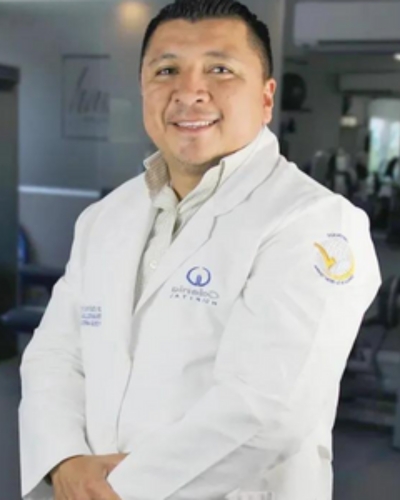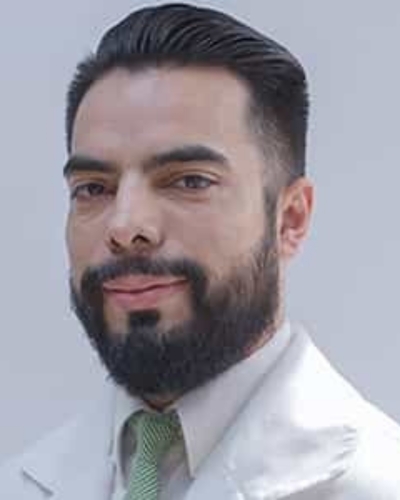Taking care of our neck is really important. It’s where our spine starts, and any problems there can cause a lot of trouble. When we have issues with our neck, especially ones that need surgery, it’s crucial to find the best doctor to help us.
In this blog post, we’re going on a journey to discover the best cervical spine surgeon in the world. We’ll learn why it’s so important to find the right surgeon for neck problems and what makes a surgeon the best. Let’s dive in and find out more about this important topic together.
Table of Contents
Top 5 Cervical Spine Surgeon in the World
While it’s challenging to definitively rank the top cervical spine surgeons in the world due to variations in specialties, expertise, and patient outcomes, several renowned professionals have made significant contributions to the field. Here’s a snapshot of five cervical spine surgeons who are widely recognized for their expertise, innovation, and commitment to advancing patient care:
Dr. Kayhan Turan – Spinal Cord Injury Specialist
- Background: Highly trained and experienced orthopedic surgeon specializing in robotic-assisted arthroplasty.
- Experience: Founder and head-chief of Turan & Turan Health Group, credited with performing over 2000 robotic-assisted knee and hip arthroplasties.
- Education: Graduated from Istanbul University Çapa Medical Faculty and completed further training in orthopedics and traumatology.
- Memberships: Orthopedic Robotic Surgery Association President, member of various medical associations including AAOS and AANA.

Dr. Jesus Raul Arjona Alcocer – Sports medicine specialist
- Background: Distinguished orthopedic surgeon certified by the Mexican Council of Orthopedics and Traumatology, with extensive experience in joint surgeries.
- Experience: Performed over 3,000 procedures and treated more than 17,000 patients.
- Education: Graduated from the University of Yucatan Faculty of Medicine and completed specialized training in orthopedics and traumatology.
- Memberships: Active member of ISAKOS, AMECRA, and FEMECOT.

Dr. Max Greig – Orthopedic surgeon
- Background: Dual citizen of Mexico and the United States, renowned orthopedic surgeon specializing in joint replacements and spine surgeries.
- Experience: Medical staff member of several private hospitals in Puerto Vallarta, Mexico, with extensive experience in orthopedic surgery.
- Education: Graduated from the University of Guadalajara Faculty of Medicine and completed specialized training in orthopedics and traumatology..
- Memberships: Active member of various international and national orthopedic associations including AAOS and AMOT-FEMECOT.

Dr. Murat Tiftikci – Spinal cord injury specialist
- Background: Highly skilled neurosurgeon certified by the Mexican Council of Orthopedics and Traumatology, with expertise in spinal surgeries.
- Experience: Over 27 years of experience as a neurosurgeon, with specialization in spine surgeries.
- Education: Graduated from Gazi University Faculty of Medicine and completed specialized training in neurosurgery.
- Memberships: Member of the Turkish Neurosurgical Society and Sakarya Medical Chamber.

Dr. Heber Avitia – Orthopedic Surgeon
- Background: Distinguished orthopedic surgeon based in Mexico, known for his commitment to patient care and expertise in joint surgeries.
- Experience: Experienced orthopedic surgeon specializing in knee and hip replacements, with a focus on personalized treatment plans.
- Education: Graduated from the University of Guadalajara Faculty of Medicine and completed specialized training in orthopedics and traumatology.
- Memberships: Active member of several orthopedic associations including AAOS and AMOT-FEMECOT.

Innovations and Advancements in Cervical Spine Surgery
Cervical spine surgery has seen significant innovations and advancements aimed at improving patient outcomes, reducing invasiveness, and speeding up recovery. Here are some notable innovations in cervical spine surgery:
- Minimally Invasive Techniques: Minimally invasive cervical spine surgery has gained popularity in recent years. These techniques use smaller incisions, specialized instruments, and advanced imaging technology to access the cervical spine, reducing trauma to surrounding tissues, blood loss, and recovery time compared to traditional open surgeries.
- Navigation and Robotics: Navigation systems and robotics have revolutionized cervical spine surgery by providing real-time imaging guidance and enhanced precision during procedures. These technologies enable surgeons to plan and execute complex spinal surgeries with greater accuracy and safety.
- Artificial Disc Replacement: Artificial disc replacement (ADR) offers an alternative to traditional cervical fusion surgery for treating degenerative disc disease. ADR preserves motion at the affected spinal segment, potentially reducing the risk of adjacent segment degeneration compared to fusion procedures.
- Motion-Preserving Implants: Along with ADR, motion-preserving implants such as cervical disc arthroplasty devices have been developed to maintain spinal motion and function while addressing cervical pathology. These implants aim to restore normal biomechanics of the cervical spine and minimize postoperative stiffness and adjacent segment degeneration.
- Biologics and Bone Substitutes: Advancements in biologic agents and bone substitutes have expanded the options for cervical spine fusion surgery. Growth factors, bone morphogenetic proteins (BMPs), and synthetic bone graft materials promote bone healing and fusion, reducing the reliance on autologous bone grafts and their associated donor site morbidity.
- Endoscopic Surgery: Endoscopic techniques have been adapted for cervical spine surgery, allowing surgeons to access and treat cervical pathology through small incisions using specialized endoscopes and instruments. Endoscopic cervical spine surgery offers advantages such as reduced muscle damage, faster recovery, and less postoperative pain compared to traditional approaches.
- 3D Printing Technology: 3D printing technology has enabled the customization of implants and surgical guides tailored to the patient’s anatomy for precise placement during cervical spine surgeries. Patient-specific implants improve fit, stability, and outcomes while reducing surgical time and complications.
- Biomechanical Studies and Implant Design: Advances in biomechanical studies and computer modeling have contributed to the development of innovative cervical spine implants and instrumentation designed to optimize spinal alignment, stability, and load distribution. Improved implant design enhances surgical outcomes and long-term durability.
- Intraoperative Monitoring: Intraoperative neuromonitoring techniques help surgeons assess spinal cord and nerve function in real-time during cervical spine surgeries, reducing the risk of neurologic complications and improving surgical safety.
FAQs about Cervical Spine Surgery
What are some common cervical spine issues that may require surgery?
Common cervical spine issues that may require surgery include herniated discs, spinal stenosis, degenerative disc disease, cervical radiculopathy, and cervical myelopathy.
How can patients find the best cervical spine surgeon for their needs?
Patients can find the best cervical spine surgeon for their needs by researching surgeons who specialize in spinal surgery, checking their credentials, reviewing patient testimonials and outcomes, consulting with multiple surgeons for second opinions, and discussing treatment options with their primary care physician or specialist.
What are some innovations and advancements in cervical spine surgery?
Innovations and advancements in cervical spine surgery include minimally invasive techniques, robotic-assisted surgery, artificial disc replacement, navigation systems for precise surgical guidance, and advancements in biologics and materials used in spinal implants.
How long does recovery typically take after cervical spine surgery?
Recovery time after cervical spine surgery varies depending on the type of procedure performed, the patient’s overall health, and other factors. In general, recovery can take several weeks to months, with patients gradually increasing their activity level under the guidance of their surgeon and physical therapist.
Are there risks associated with cervical spine surgery?
Like any surgical procedure, cervical spine surgery carries risks, including infection, bleeding, nerve damage, and complications related to anesthesia. However, the risks can be minimized by choosing an experienced surgeon and following post-operative instructions carefully.
Can cervical spine surgery be avoided with non-surgical treatments?
In many cases, non-surgical treatments such as physical therapy, medication, injections, and lifestyle modifications can effectively manage cervical spine issues without the need for surgery. However, surgery may be recommended if conservative treatments fail to alleviate symptoms or if the condition is severe or progressive.
What should patients expect during the consultation with a cervical spine surgeon?
During a consultation with a cervical spine surgeon, patients can expect to discuss their medical history, symptoms, and previous treatments. The surgeon will conduct a physical examination and may order diagnostic tests such as X-rays, MRI, or CT scans to evaluate the spine. The surgeon will then explain treatment options, including the risks and benefits of surgery, and answer any questions the patient may have.
Ready to prioritize your spinal health and find the best cervical spine surgeon for your needs? Take the first step towards a pain-free life by scheduling a consultation with a top-rated spine specialist today!





